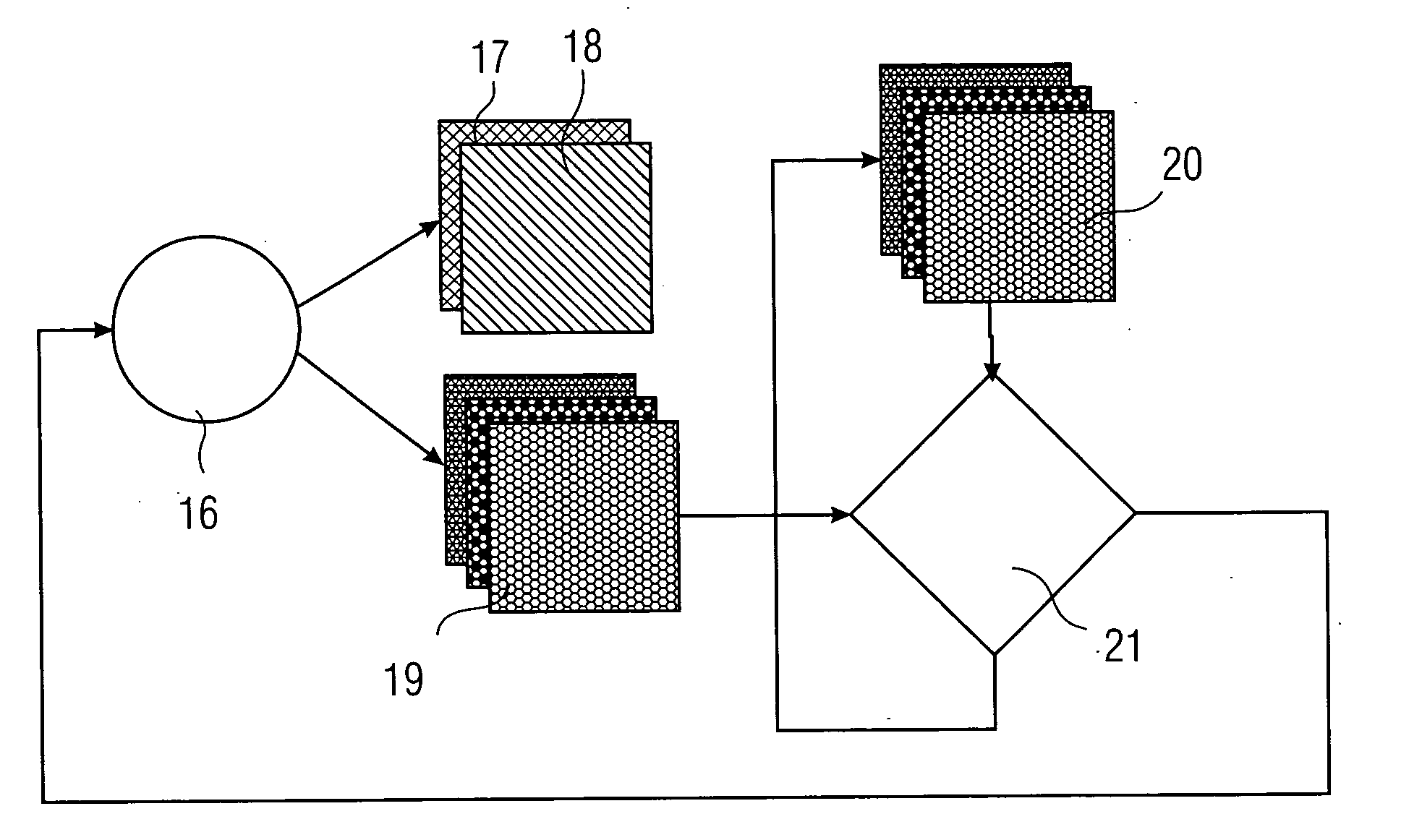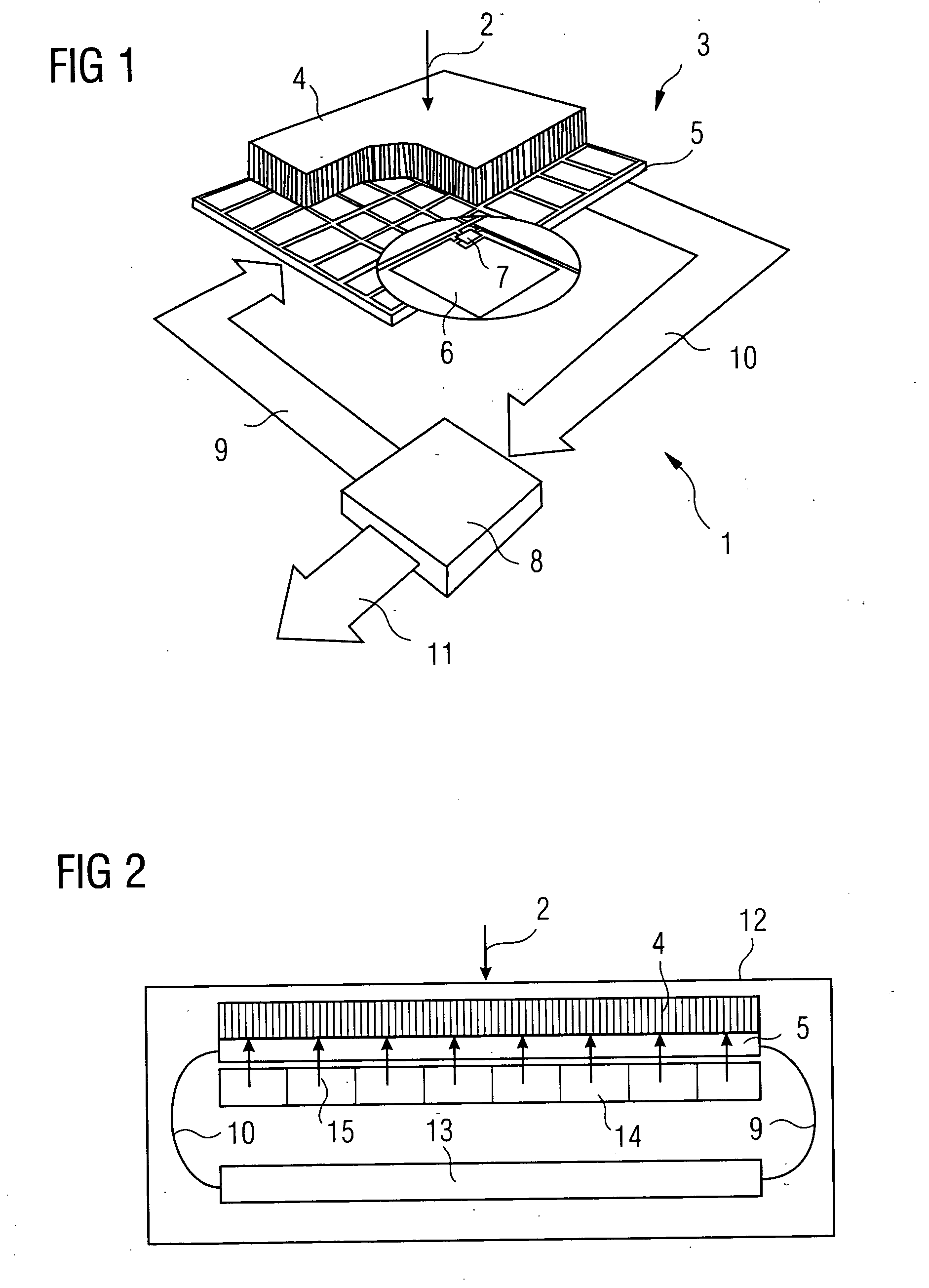Imaging device
a technology of image artifacts and detectors, which is applied in the direction of radio frequency controlled devices, instruments, television systems, etc., can solve the problems of rapid fluctuations and inability to use digital data generated by new-style flat-panel detectors for diagnostic purposes in raw state, and achieve the effect of reliable compensation of image artifacts
- Summary
- Abstract
- Description
- Claims
- Application Information
AI Technical Summary
Benefits of technology
Problems solved by technology
Method used
Image
Examples
Embodiment Construction
[0029]FIG. 1 shows an imaging device 1, which is p art of an x-ray device and which incorporates an x-ray source (not shown in FIG. 1) for generating x-rays 2. The x-rays 2 fall on a flat-panel detector 3 after passing through an object to be radiographed. The flat-panel detector 3 typically measures about 30 cm by 30 cm. The flat-panel detector 3 incorporates a scintillator 4, which is manufactured—for example—from CsI. Below the scintillator 4, there is an active matrix 5, which is normally manufactured on the basis of amorphous silicon. A field of photodiodes is formed on the active matrix 5. In the photodiodes 6, the light generated in the scintillator 4 via the respective photodiode 6 is absorbed. During this absorption, electron-hole pairs are generated which migrate in turn to the anode and cathode of the respective photodiode 6. The charge thus generated is stored in the respective photodiode 6 until said photodiode 6 is read out with the help of an active switching element ...
PUM
 Login to View More
Login to View More Abstract
Description
Claims
Application Information
 Login to View More
Login to View More - R&D
- Intellectual Property
- Life Sciences
- Materials
- Tech Scout
- Unparalleled Data Quality
- Higher Quality Content
- 60% Fewer Hallucinations
Browse by: Latest US Patents, China's latest patents, Technical Efficacy Thesaurus, Application Domain, Technology Topic, Popular Technical Reports.
© 2025 PatSnap. All rights reserved.Legal|Privacy policy|Modern Slavery Act Transparency Statement|Sitemap|About US| Contact US: help@patsnap.com



